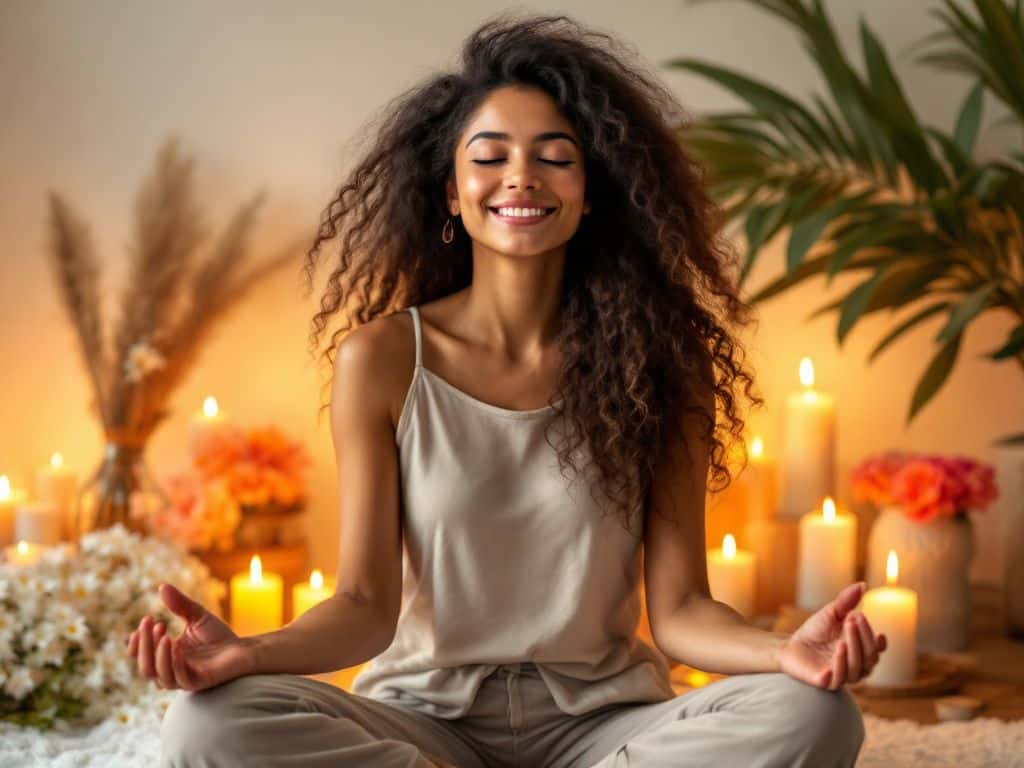
In a society fixated on appearance, hair can be both a crown of glory and a source of profound anxiety. Whether it’s worrying over a bad hair day or suffering from hair loss, the stress associated with hair can impact emotional well-being. That’s where the practice of mindfulness, particularly hair meditation and beauty mindfulness, steps in. This guide melds ancient practices with modern psychology to transform your relationship with your hair from one of anxiety to one enriched with self-compassion and stress reduction.
Understanding Hair Anxiety
Hair anxiety is not just about vanity. It’s a poignant reflection of deeper issues involving self-image, societal pressures, and even genetic predispositions. According to the American Psychological Association, 72% of people in appearance-focused studies indicated that they experience higher stress levels when their physical appearance doesn’t meet certain societal standards. For many, hair is central to this perception, making meditation not just a wellness trend, but a necessity for mental health.
The Science of Meditation for Stress Reduction
Meditation, a practice dating back thousands of years, has been scientifically verified as a potent stress-reduction tool. Research published in the journal *Psychosomatic Medicine* demonstrates that mindfulness-based stress reduction (MBSR) can significantly alleviate symptoms of anxiety. Our follicles and nerves are intricately linked—the hormones responsible for stress (e.g., cortisol) directly affect our hair growth cycles, as per research from the University of Bradford. Therefore, targeting stress can simultaneously benefit your hair health.
Practical Tips: Integrating Hair Meditation into Your Routine
Transitioning to a routine that includes hair meditation and beauty mindfulness can be both rewarding and practical. Here are several actionable steps to guide you:

Establishment of a Meditation Environment
Create a serene environment that invites relaxation. Find a quiet space where you won’t be disturbed. Incorporate elements that engage the senses: soft lighting, soothing scents like lavender or ylang-ylang, and calming sounds like gentle rain or soft music. These settings prime your mind for a state of meditation conducive to stress reduction.
Guided Visualization
Visualization is a powerful technique in hair meditation. Picture each strand of hair as vibrant and strong. Visual storytelling helps transform internal dialogues from negative to positive. Engage in a guided visualization session where you imagine each follicle being nourished and your scalp at ease, releasing tension with each exhalation.
Intention Setting with Affirmations
Affirmations reinforce a positive mindset and target self-compassion. Develop personalized affirmations focused on your strengths and beauties beyond your hair. For example, “I am more than my hair; I am strong, beautiful, and confident.” Repeat these affirmations during your meditation sessions to cultivate self-acceptance.
Incorporating Breathwork for Emotional Balance
Breathwork is pivotal in managing anxiety tied to beauty mindfulness. Techniques such as Pranayama balance the autonomic nervous system and foster relaxation. A specific breathing exercise involves inhaling for four counts, holding your breath for seven, and exhaling for eight (4-7-8 breathing). This technique not only decreases stress but also enhances focus, which is essential in combating intrusive negative thoughts regarding appearance.

Real-World Application: Case Study Analysis
Consider the case of a 35-year-old woman suffering from hair thinning due to chronic stress. After integrating daily hair meditation practices and breathwork into her life, recorded improvements were seen in her subjective stress reports over a six-month period. She recorded feeling significantly less anxiety related to her appearance and observed tangible benefits such as decreased hair shedding, confirming the symbiotic relationship between emotional wellness and hair health.
Visual Impact: Diagrams and Illustrations
Understanding the connection between emotional and physical health benefits from visualization. Picture a table featuring stress symptoms (irritability, sleep disturbances) alongside meditational counter-practices (deep breathing, visualization):
| Stress Symptom | Meditation Counter-Practice |
|---|---|
| Irritability | Guided Visualization |
| Sleep Disturbances | 4-7-8 Breathwork |
| Negative Self-Talk | Affirmations |
Visual aids like diagrams can simplify complex relationships, enhancing learning and application.
Industry Practices: Standards Backed by Research

The approach of integrating beauty mindfulness continues to gain validation through expansive studies showing meditation’s effects on psychological and physical well-being. Industry standards now often include mindfulness courses for comprehensive wellness, recognizing the role it plays not only in beauty but in overall health maintenance, as endorsed by the World Health Organization.
Personalization: Tailoring Meditation to Your Needs
Personalization ensures that meditation practices are sustainable. Adjust session durations to suit your comfort level. Whether it’s a five-minute silent meditation in the morning or a thirty-minute evening routine, the key is consistency to see lasting benefits.
Emotional Resilience: Building Longer-term Coping Skills
Meditation extends beyond temporary relief. It equips you with emotional resilience necessary for tackling future challenges calmly and efficiently. This aspect is crucial for long-term stress reduction strategies, aiding individuals in developing coping skills applicable not only to hair-related anxiety but to various life stressors.
Final Thoughts and Guidance
Beauty mindfulness through hair meditation is not merely about easing anxiety on a particularly bad hair day, but about fostering a healthier relationship with oneself. It serves as a grounding force that enhances both emotional and physical stability. Implementing these meditation practices based on scientific evidence and industry standards offers a verifiable path to self-compassion and holistic wellness. With regular practice, you can cultivate a mindset that celebrates your inherent beauty and resilience, one meditative breath at a time. 🌿
This guide serves as your companion in transforming moments of hair anxiety into opportunities for self-discovery and growth, etched in both mind and spirit, offering enduring peace amidst daily ambivalence.
Frequently Asked Questions
What are the benefits of using a hair mask in my hair care routine?
Using a hair mask can provide several benefits, including hydration, smoothing, strengthening, curl definition, heat protection, and damage repair. Hair masks infuse the hair with moisture, help coat the hair shaft to seal split ends, reduce breakage, and protect the hair from heat styling and environmental damage[1][4].
What ingredients should I look for in a hair mask?
Effective hair masks often include ingredients such as coconut oil, argan oil, shea butter, honey, avocado oil, green tea, and coconut water. These ingredients provide nourishment, moisturize, and protect the hair, offering benefits like softening, moisturizing, and protecting against damage[2][5].
How often should I use a hair mask in my routine?
You should use a hair mask whenever your hair feels dry, unmanageable, or in need of intense hydration. This can vary depending on your hair type and needs, but generally, using a hair mask once or twice a week can help maintain healthy and moisturized hair[1][4].
How do I apply a hair mask for the best results?
To apply a hair mask effectively, shampoo your hair first, then apply the mask, focusing especially on the ends where hair tends to be the most damaged. Leave the mask on for anywhere from 10 minutes to overnight, depending on the type of mask and your hair’s needs[1][4].
References


Leave a Reply